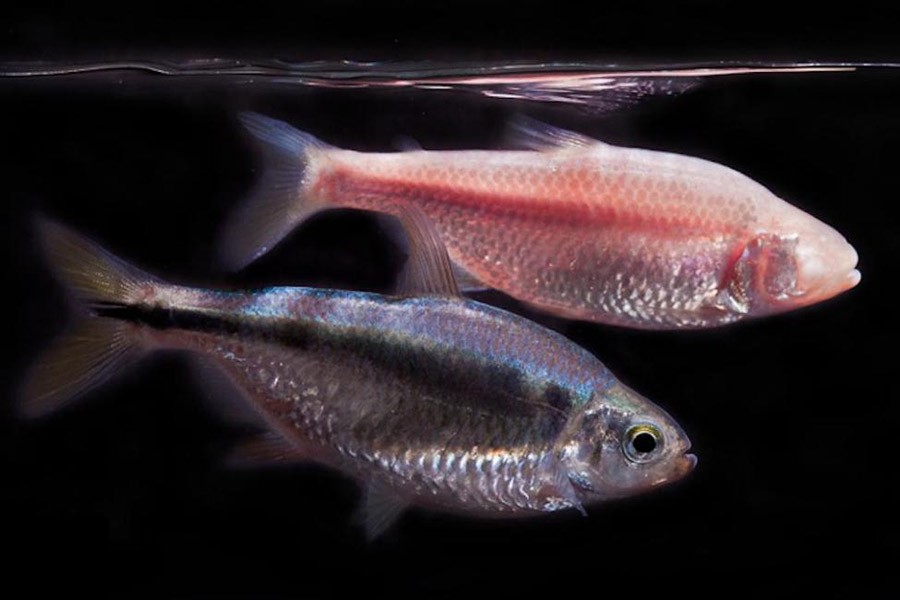A fish that can repair its heart may hold clues for future treatments in people, according to a study.
Scientists studying the Mexican tetra fish found three areas of the fish genome were involved in its ability to regenerate heart tissue.
One gene appeared to play a particularly key role in the process.
Researchers hope their study will one day make it possible to heal heart muscle in patients who have had a heart attack.
Hundreds of thousands of people in the UK live with heart failure, often as a result of a heart attack.
Because it is not possible for humans to regenerate their damaged, scarred heart muscle, people either have to live with the condition or may require a heart transplant.
Cave fish clues
For this study, funded by the British Heart Foundation, Dr Mathilda Mommersteeg and her team at the University of Oxford studied two types of Mexican tetra fish - river-dwellers that are able to self-heal their heart tissue, and cave-dwellers that cannot.
The cave fish, who once lived in the rivers of Northern Mexico, were washed into caves by floodwaters about 1.5 million years ago and evolved, losing their sight and colour because of living in perpetual darkness.
Comparing the two types of tetra fish, researchers found two genes - lrrc10 and caveolin - were much more active in the river fish following heart injury.
Having discovered this, they switched off the lrrc10 gene in a different species of fish with self-healing abilities, the zebrafish.
With this gene no longer working properly, the zebrafish became unable to fully repair its heart without scarring.
Scar tissue stops the heart muscle from contracting properly and reduces the heart's ability to pump blood around the body.
Both of these genes are present in humans, and lrrc10 is known to be linked to a heart condition called dilated cardiomyopathy.
The study authors say their findings suggest it will one day be possible to regenerate damaged hearts in people by artificially modifying how these and other genes function.
This could be done either with drugs or through gene-editing techniques, where DNA is modified, deleted or replaced, using tools like Crispr-Cas9.
Dr Mommersteeg, who is associate professor of developmental and regenerative medicine, said: "I do believe that this fish can tell us, at some point, how we can really repair the human heart...
"It's early days but we're incredibly excited about these remarkable fish and the potential to change the lives of people with damaged hearts."
But she said more work is needed to find other key genes that may be involved in the heart regenerating, reports BBC.
Prof Metin Avkiran, associate medical director at the British Heart Foundation, said: "Survival rates for heart failure have barely changed over the last 20 years, and life expectancy is worse than for many cancers.
"Breakthroughs are desperately needed to ease the devastation caused by this dreadful condition."
The study has been published in Cell Reports.


